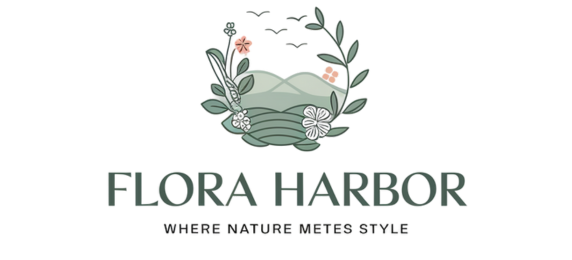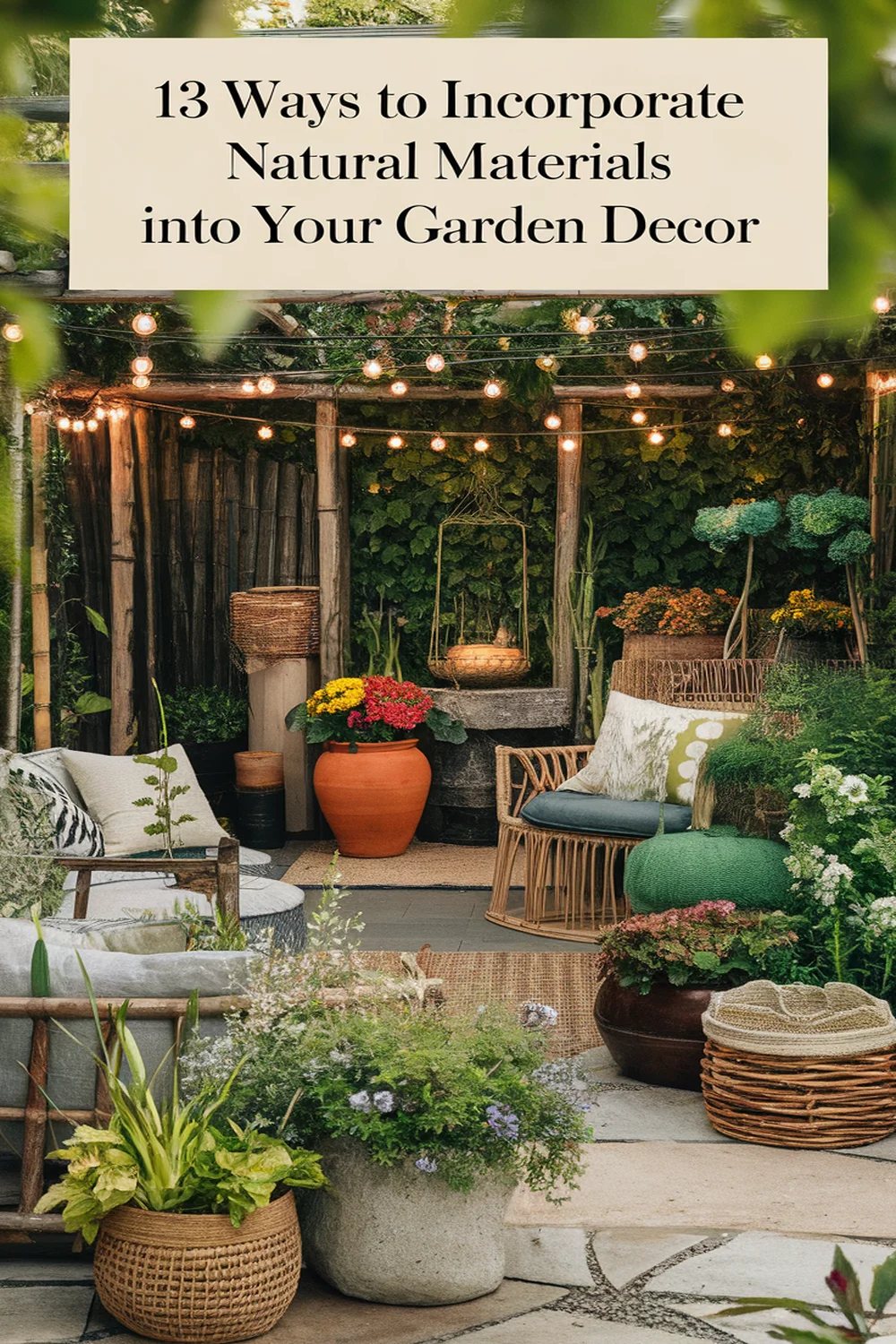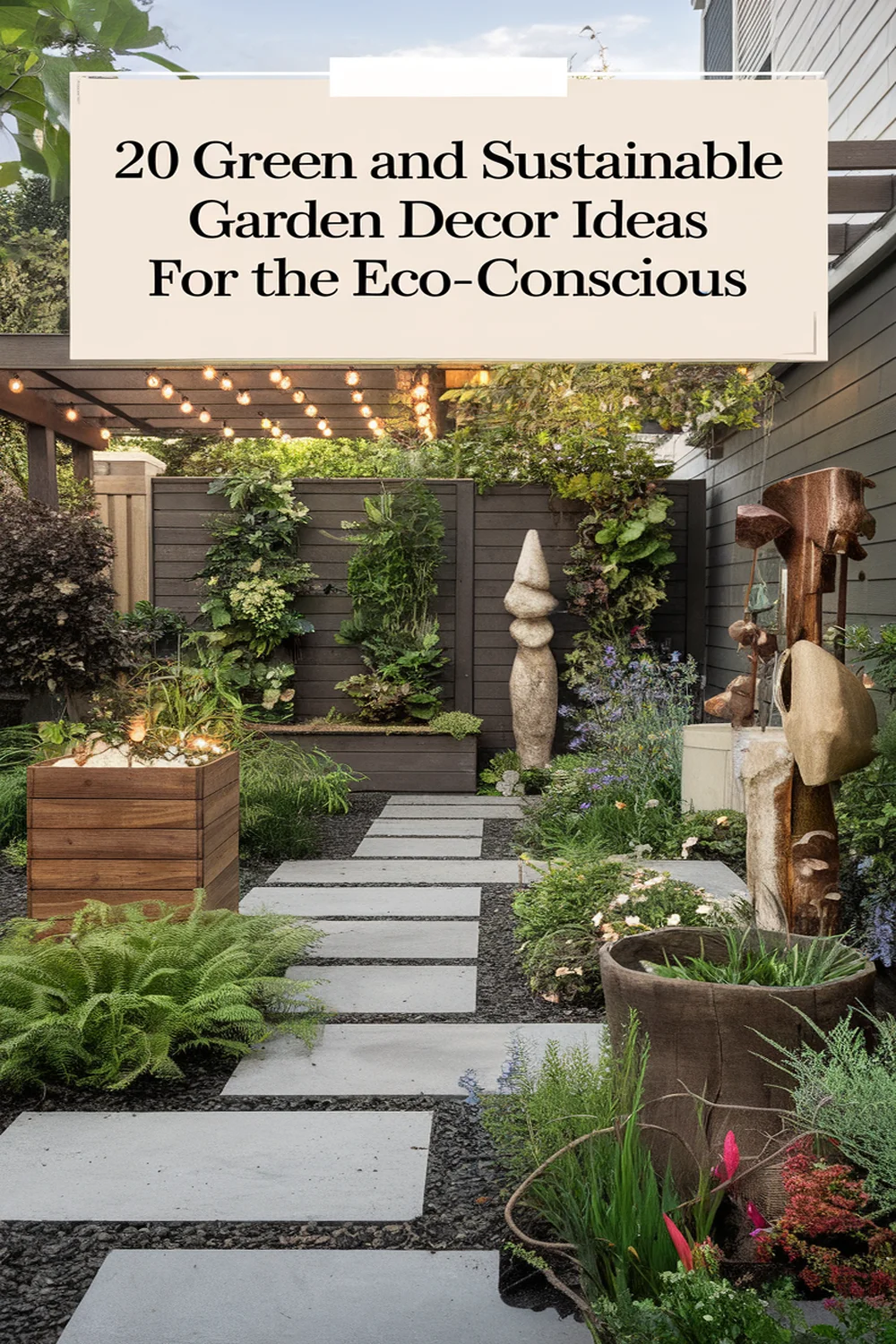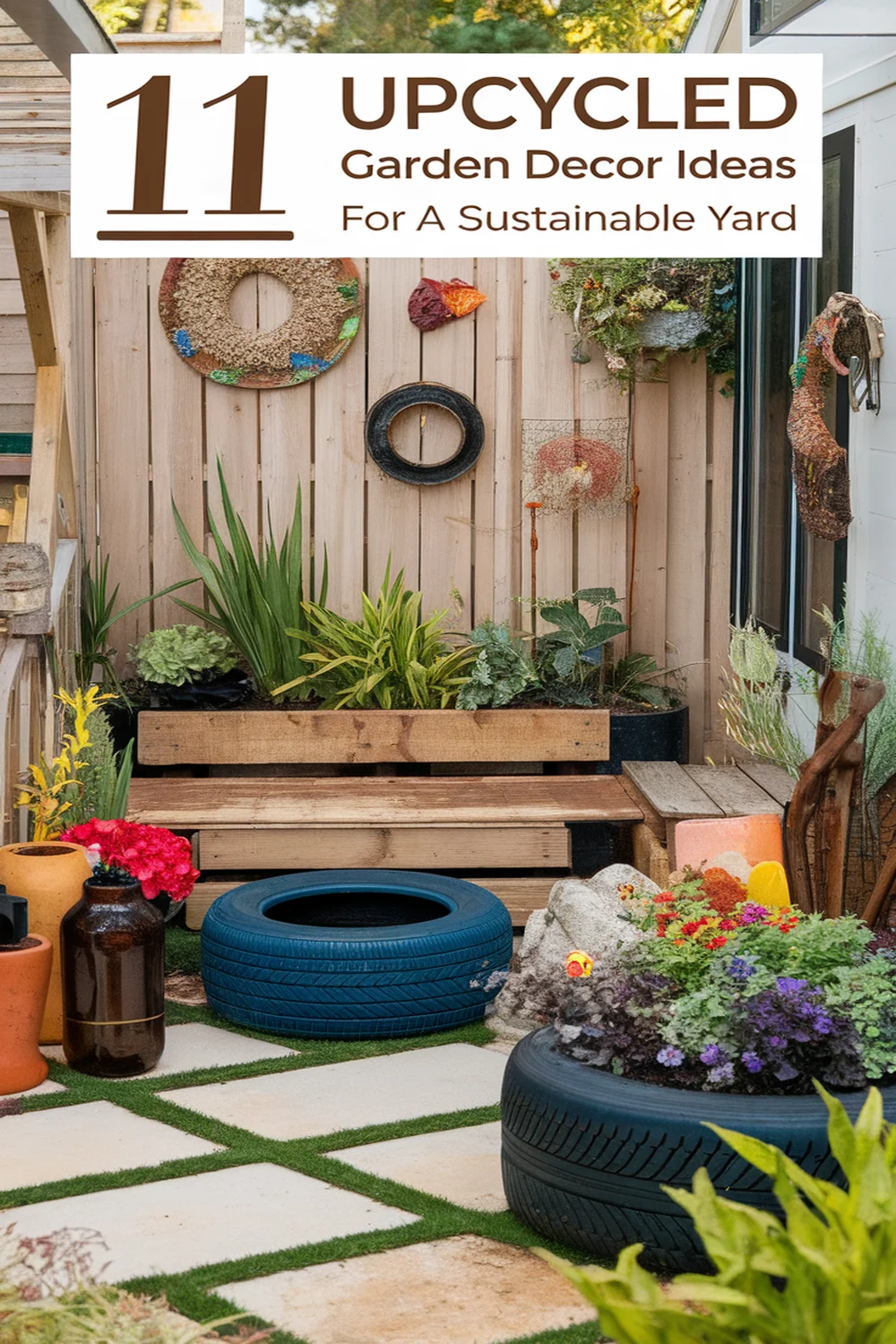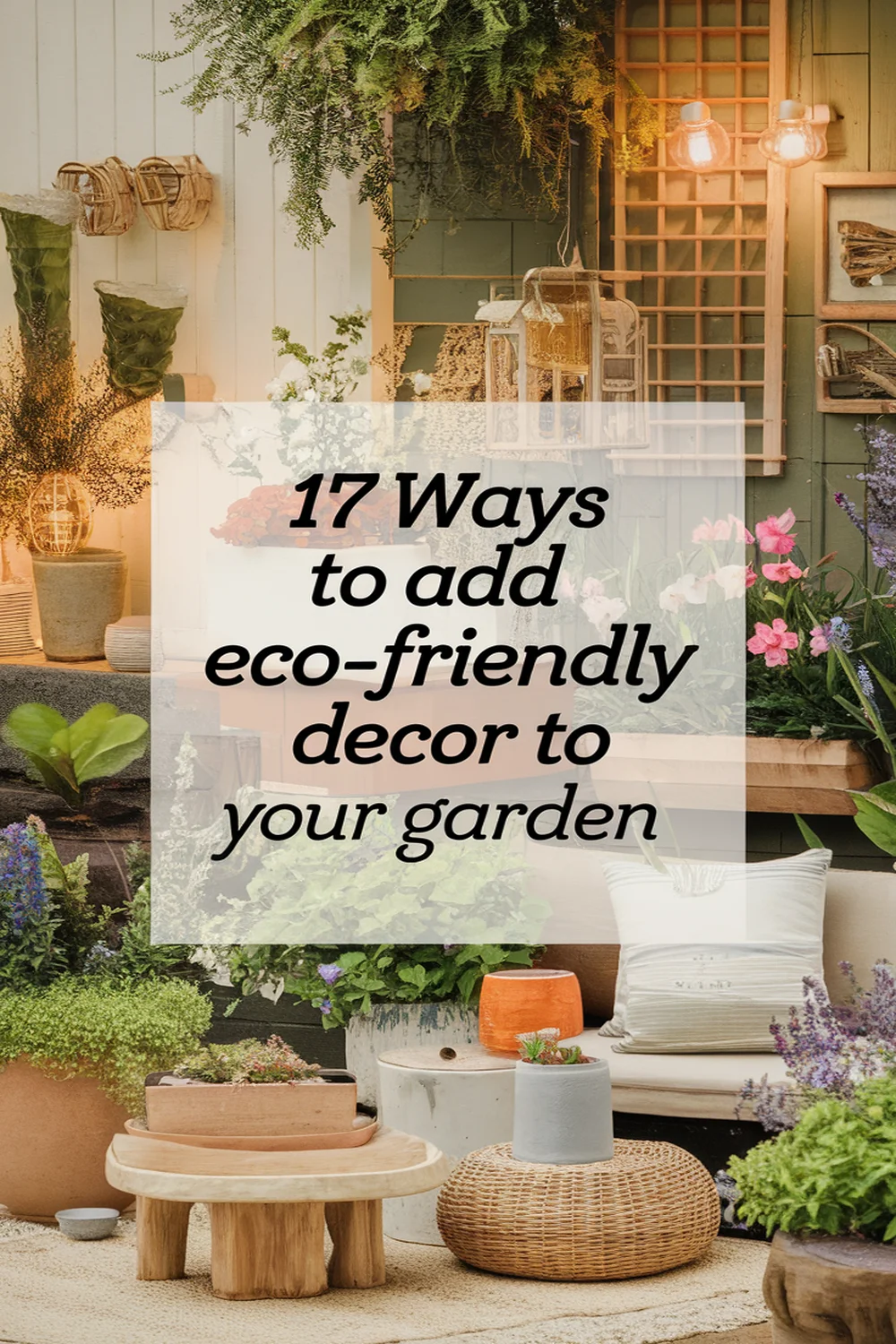This post may contain affiliate links. Please read our policy page.
Incorporate natural materials into your garden decor to enhance its charm and sustainability. Start with wooden planters to add rustic elegance and create stone pathways for a natural feel. Use bamboo for fencing and features, and consider clay garden pots to promote healthy roots. Don’t forget natural fiber textiles for warmth and comfort. Enhance the tranquility with a moss garden. Discover more creative ways to blend nature and artistry in your garden space.
Embrace Wooden Planters
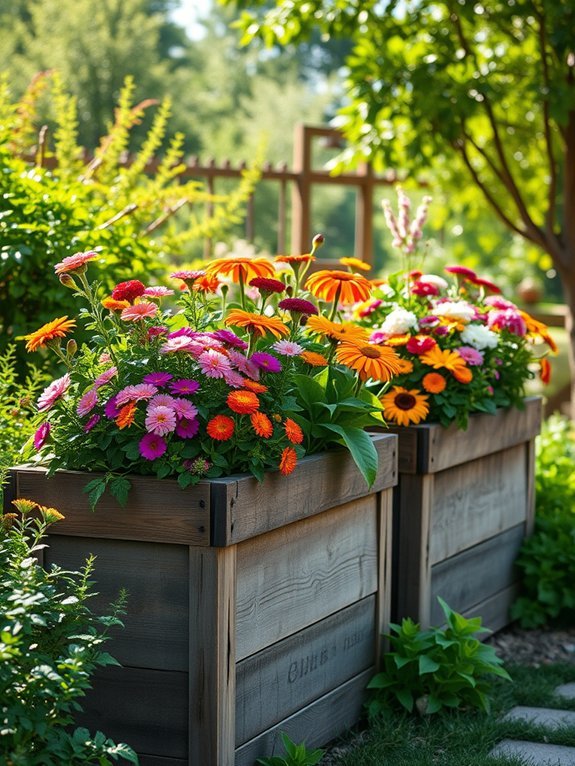
While you might think of concrete or plastic when it comes to garden decor, embracing wooden planters can transform your outdoor space into a warm, inviting sanctuary. These planters offer a rustic charm that harmonizes beautifully with nature. When choosing wooden options, consider cedar or redwood for their durability and resistance to decay. You’ll appreciate how well they retain moisture, providing a cozy environment for your plants. Plus, their natural aesthetics can enhance your garden’s appeal, blending seamlessly with flowers and greenery. Experiment with various shapes and sizes to create diverse visual interest. Don’t forget to treat your planters with non-toxic sealants to prolong their lifespan. With wooden planters, you’re not just planting; you’re enriching your outdoor sanctuary.
Construct Stone Pathways
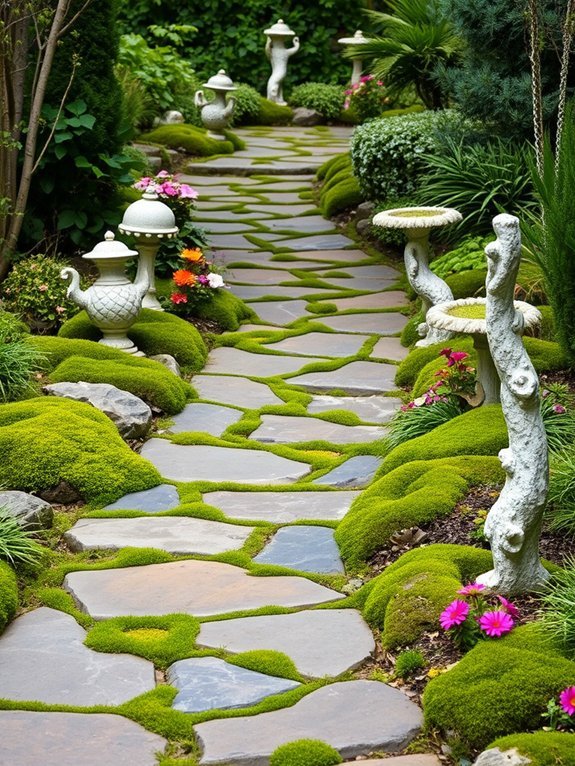
As you contemplate enhancing your garden’s aesthetic, constructing stone pathways can offer both functionality and beauty. Start by choosing stones that harmonize with your garden’s style—think smooth pebbles, rustic flagstones, or even colorful mosaic tiles. Plan a layout that guides visitors through your blooming spaces, using curves to create an inviting flow.
To guarantee stability, dig a slight trench, add gravel for drainage, and position your stones securely, leaving slight gaps for ground cover or moss to peek through. These natural materials not only refine the look but also make your paths safe and accessible. As you stroll along your new pathways, you’ll appreciate how the stones connect each element of your garden, inviting exploration and enjoyment.
Design Natural Fencing
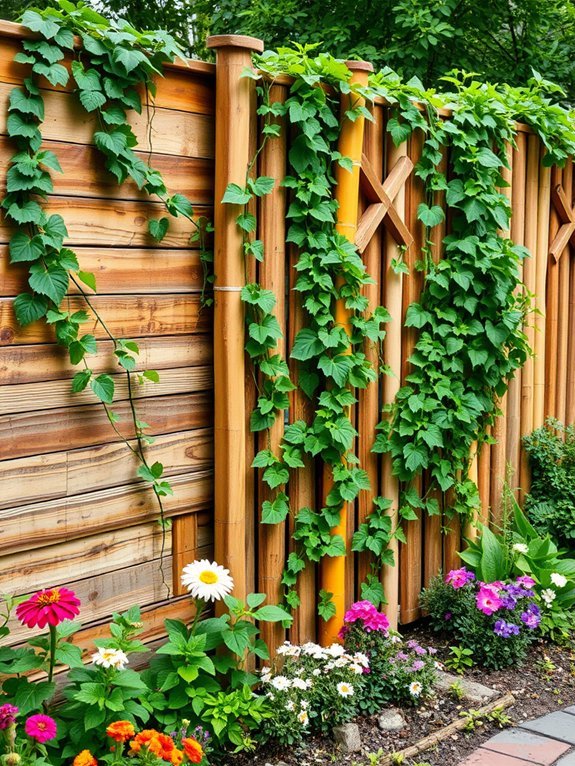
When you want to create a natural barrier that seamlessly blends into your garden, designing fencing with organic materials can be a stunning choice. Utilizing materials like wood, willow, or even stone can enhance your garden’s aesthetic while providing functionality. To get started, consider the following options for your fencing project:
| Material | Benefits |
|---|---|
| Reclaimed Wood | Eco-friendly, rustic charm |
| Bamboo | Flexible, lightweight |
| Woven Willow | Natural texture, biodiversity |
| Cedar | Naturally resistant to decay |
| Live Hedges | Provides habitat for wildlife |
These materials not only enhance the landscape but also invite nature into your space. Each choice creates a unique feel, allowing your garden to flourish harmoniously. Happy designing!
Incorporate Bamboo Features

Incorporating bamboo features into your garden can elevate its beauty and create a harmonious atmosphere. This versatile material not only adds a natural elegance but also promotes sustainability. Here are three creative ways to use bamboo in your garden:
- Bamboo Trellises: Construct trellises from bamboo to support climbing plants. They add height and visual interest while blending seamlessly with nature.
- Water Features: Use bamboo for fountains or small water streams. The soothing sound of trickling water enhances tranquility and attracts wildlife.
- Garden Edging: Line pathways or garden beds with bamboo. It provides a clean, polished look and serves as a barrier for weeds.
With these simple additions, you’ll transform your outdoor space into a serene retreat.
Utilize Pebble Ground Cover
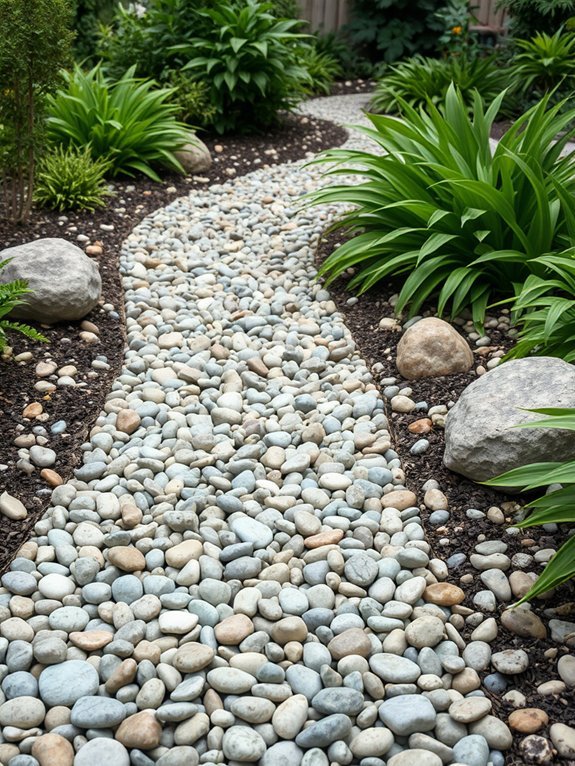
Whether you’re looking to enhance the aesthetic appeal of your garden or reduce maintenance time, utilizing pebble ground cover can be an excellent solution. These smooth, colorful stones not only provide a fresh and natural look but also create a durable, weed-resistant surface. You can choose from various sizes and types, like river rocks or crushed granite, to match your garden’s theme. Spread them around your plants or pathways to define spaces and improve drainage. Venturing beyond the usual, consider integrating pebbles in decorative patterns or as borders, adding depth and texture. Plus, they retain heat, benefiting your soil and plants during cooler nights. You’ll find that pebbles are as functional as they are visually stunning.
Build Sculptural Logs

Sculptural logs can transform any garden space into a work of art. They add texture and a rustic charm that connects your outdoor space to nature. You can incorporate these striking elements in several creative ways:
- Create focal points: Position larger logs in flower beds or near seating areas to draw the eye and create interest.
- Build natural sculptures: Stack smaller logs to form unique shapes or designs, allowing your creative vision to shine.
- Use as decorative borders: Arrange logs along pathways or garden beds to define spaces and enhance structure.
These sculptural logs not only beautify your garden but also provide a perfect habitat for beneficial insects, enriching your garden’s ecosystem. Embrace the beauty of wood!
Recommended Items
Discover our top picks to enhance your garden with natural materials—enjoy exploring!
Create A Gravel Seating Area
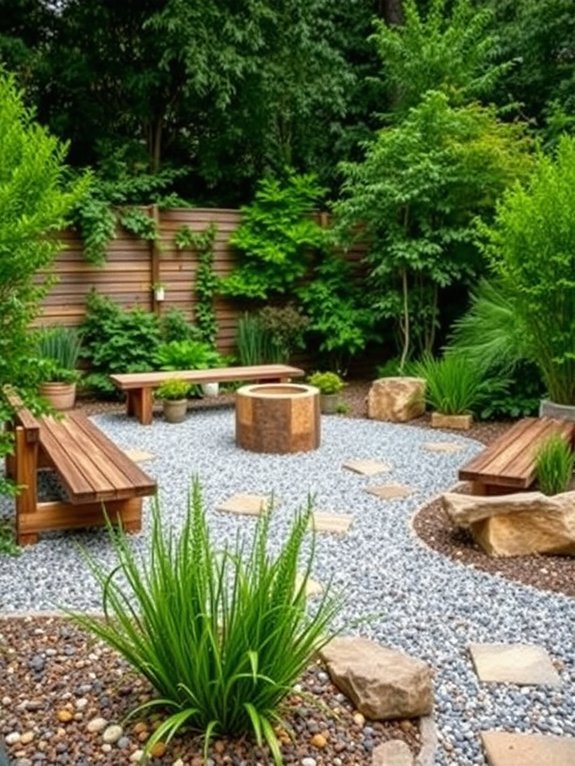
As you envision a cozy retreat in your garden, creating a gravel seating area may be the perfect solution to combine elegance and functionality. Start by selecting a flat, level spot and outlining your seating perimeter with natural stones or wooden logs. Use a landscape fabric to prevent weeds and then fill the area with smooth gravel. This not only provides a clean, rustic aesthetic but also allows for proper drainage. Add comfortable seating with weather-resistant cushions in earthy tones that complement your surroundings. Light your space with solar fairy lights or lanterns for a whimsical touch. When friends gather here, you’ll enjoy a delightful harmony of nature and comfort, a true haven right in your backyard.
Use Twigs for Garden Trellises
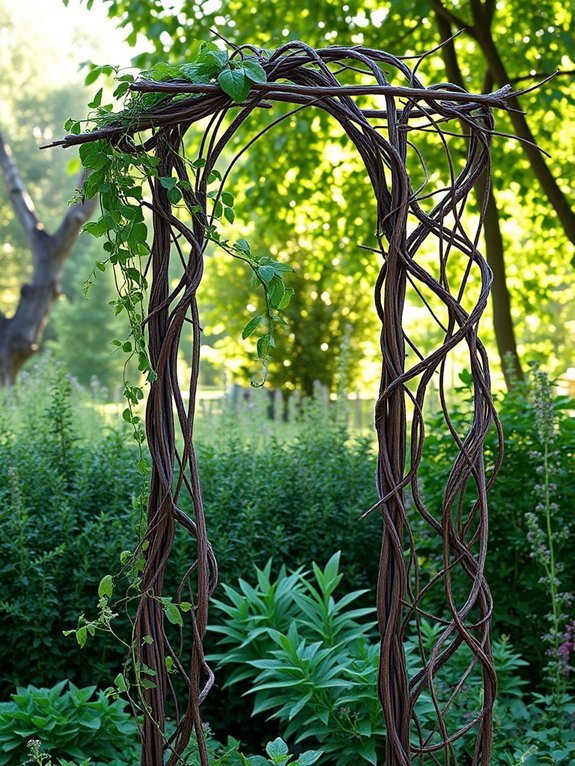
If you’re looking to add a touch of whimsy to your garden, using twigs to create charming trellises can be a delightful project. Twigs not only blend beautifully with nature, but they’re also sustainable and easy to work with. Here are three steps to assist you in crafting your twig trellis:
- Gather Materials: Collect sturdy twigs of varying lengths. Confirm they’re strong enough to support climbing plants.
- Design Your Trellis: Arrange the twigs in your desired shape—triangular, rectangular, or even a whimsical arch to house flowering vines.
- Secure and Plant: Use natural twine to bind the twigs at joints, and secure them in the soil where you plan to grow your climbing flora.
Your garden will surely invite admiration with these unique trellises!
Task Overview for Garden Decor Ideas
Install Natural Stone Fire Pits

After enhancing your garden with whimsical twig trellises, consider creating a stunning focal point with a natural stone fire pit. This inviting feature not only adds warmth but also encourages outdoor gatherings. Choose stones that blend seamlessly with your garden’s aesthetic—smooth river stones or rugged granite work beautifully. Begin by digging a shallow pit and arranging your stones in a circular pattern for stability. Remember to leave ample space for seating around your fire pit. Incorporate decorative elements like logs or natural seating with tree stumps for added charm. Finally, when it’s time to light up the night, you’ll find that the soft glow and crackling fire create an enchanting atmosphere, making your garden a cozy haven year-round.
Add Clay Garden Pots
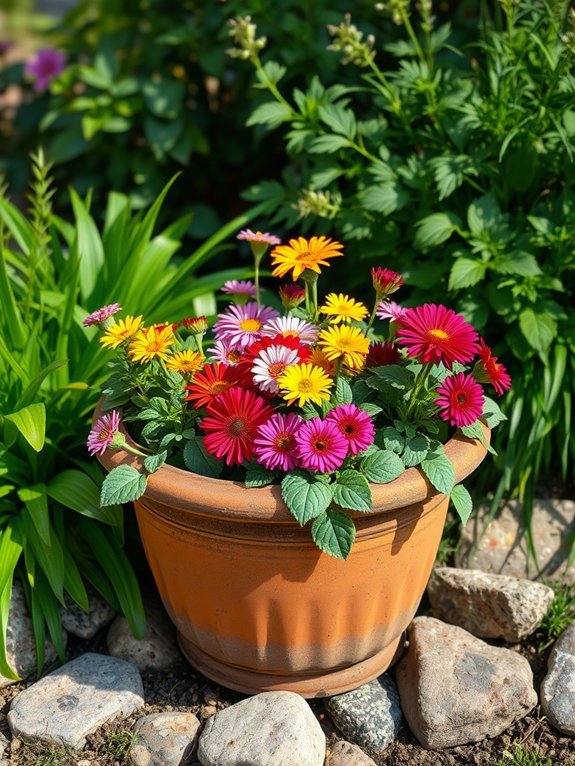
While you’re transforming your garden into a serene retreat, adding clay garden pots can elevate the aesthetic and practicality of your space. These pots not only blend beautifully with nature but also offer a few advantages that enhance your gardening experience:
- Breathability: Clay pots allow air and moisture to penetrate, promoting healthier roots for your plants.
- Temperature Regulation: They keep soil cooler during hot days and warmer in chilly nights, providing a stable environment for growth.
- Natural Aesthetic: Their earthy tones and textures add warmth, creating a harmonious look amidst vibrant blooms and lush greenery.
Incorporate Reclaimed Wood Art
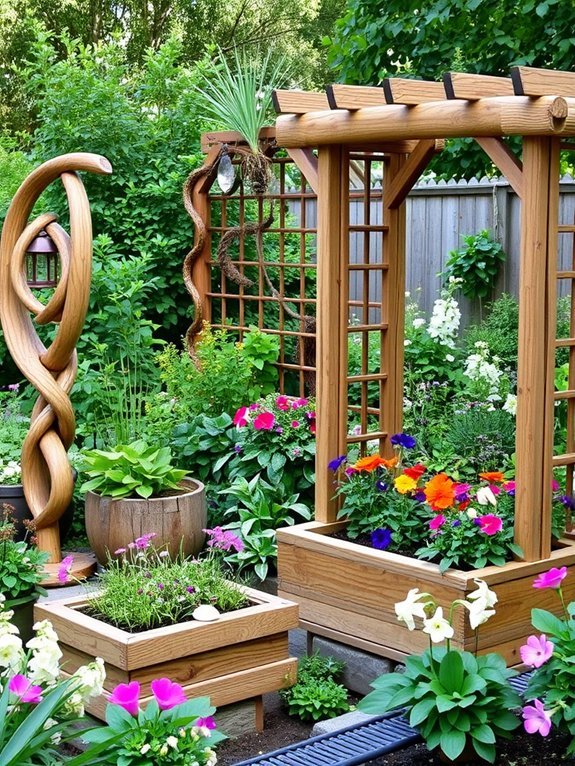
Integrating reclaimed wood art into your garden not only adds a unique touch but also tells a story of sustainability and creativity. Think about wooden sculptures, birdhouses, or garden trellises crafted from salvaged materials. These pieces can give your garden character while highlighting the beauty of imperfection. You can even create a charming seating area with rustic benches made from old pallets or barn wood. Consider painting or staining the wood to enhance its natural grain and protect it from the elements. Each art piece serves as a conversation starter, allowing visitors to appreciate both your aesthetic sense and commitment to eco-friendly practices. By incorporating reclaimed wood art, you’ll bring warmth and history to your garden decor.
Use Natural Fiber Textiles

To elevate your garden decor, consider using natural fiber textiles that bring warmth and texture to the outdoor space. These materials not only complement your plants but also create a cozy atmosphere. Here are three ideas to incorporate them effectively:
- Jute Rugs: Place a jute rug under your outdoor seating area for a rustic charm that’s both stylish and durable.
- Linen Pillows: Add linen pillows to your garden bench or chairs; they’ll provide comfort and a breathable fabric option, perfect for warm days.
- Cotton Throws: Drape a cotton throw over your seating for a pop of color and an inviting touch when the evenings get cool.
Using these textiles will enhance both the aesthetic and comfort of your garden retreat.
Create A Moss Garden
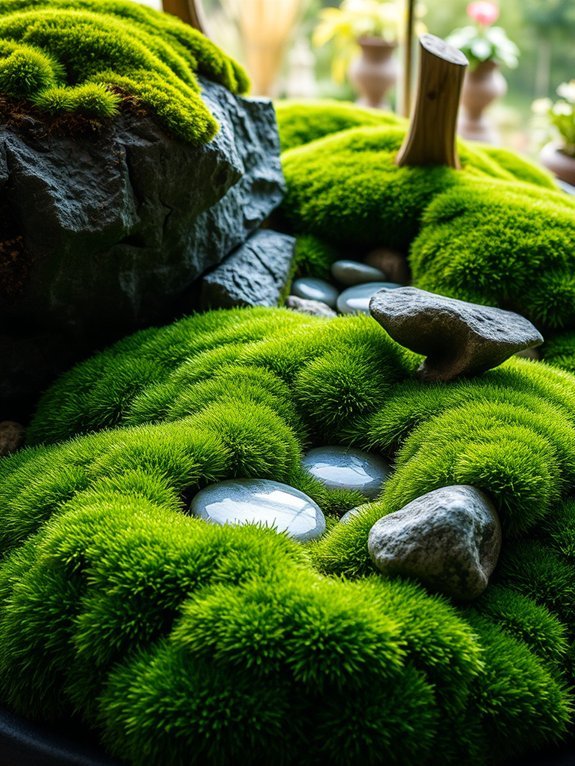
If you want to create a serene and lush atmosphere in your garden, a moss garden might be just what you need. Begin by selecting a shady area, as moss thrives in low-light conditions. Clear the space of debris and weeds, then prepare the soil by gently loosening it to encourage growth. You can gather moss from nearby woods or purchase it from nurseries; just make sure the varieties are suitable for your climate. Lay the moss in patches, pressing it down firmly. Mist the area with water regularly to keep it moist, especially during dry spells. To enhance the look, incorporate natural stones or logs as decorative accents. With patience, you’ll craft a tranquil oasis that invites relaxation.
